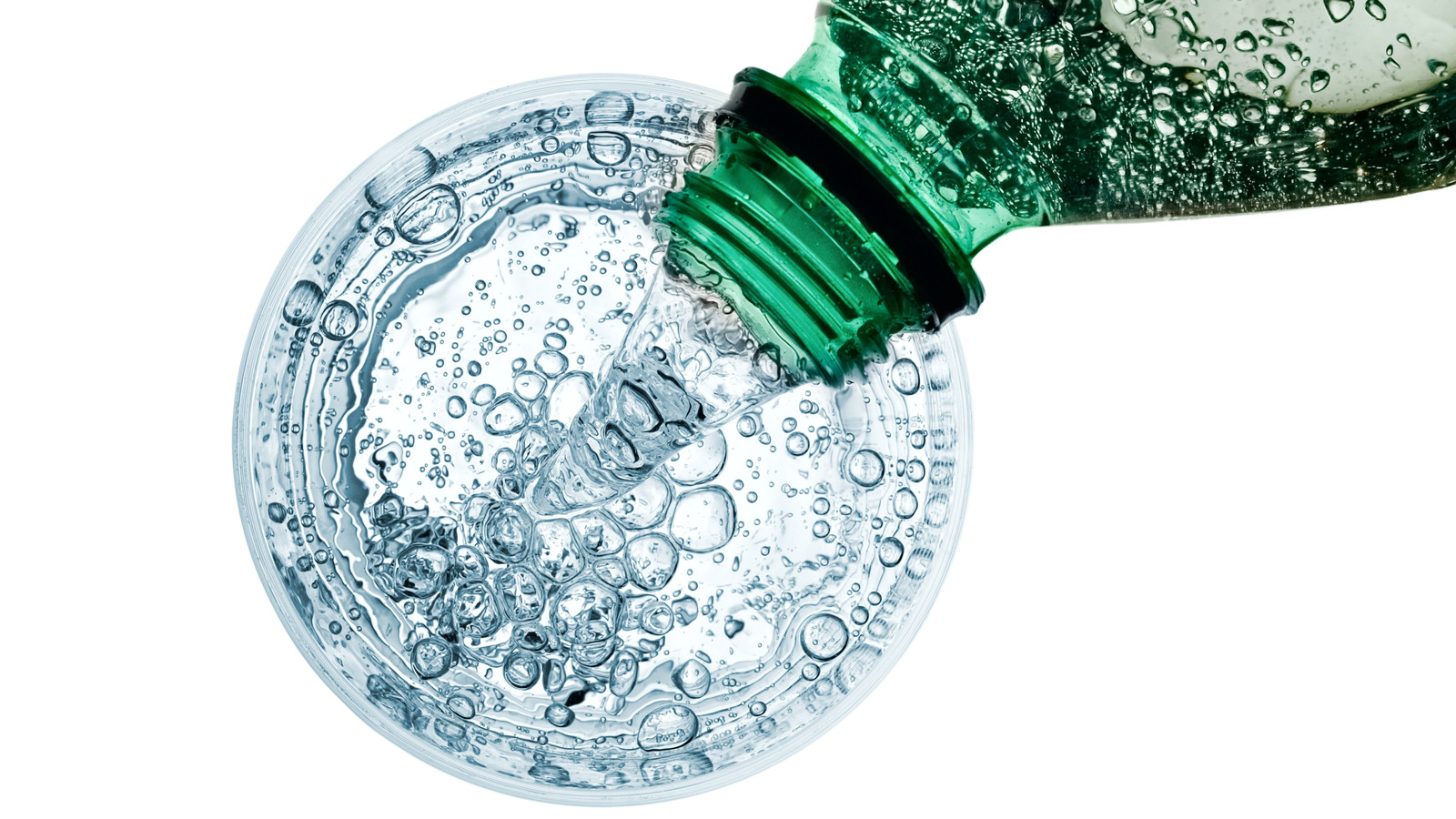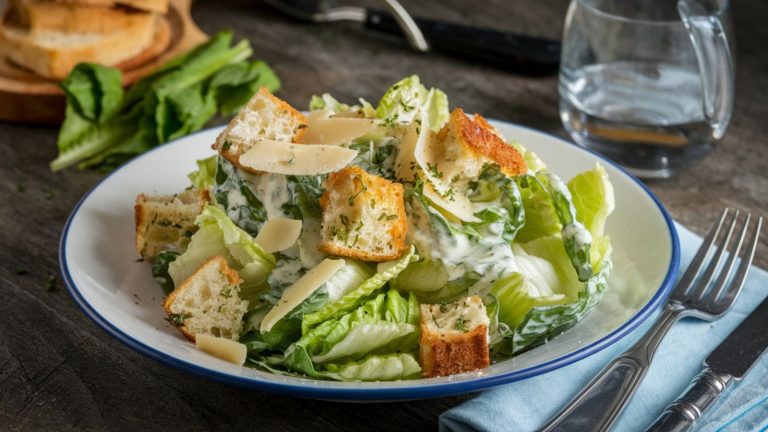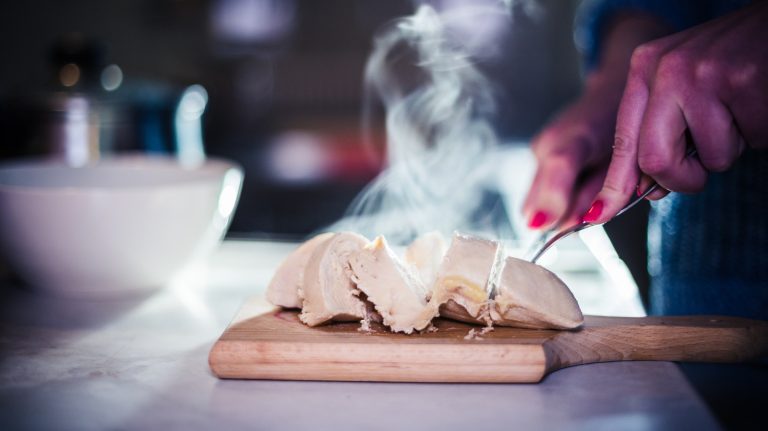You may think of club soda as an inexpensive base for homemade carbonated drinks, but it can do so much more than just sit in a glass. Club soda’s carbonation makes it one of the more versatile items you can keep in your home — it can be used in food, for cleaning, and even to support your health. Club soda is affordable and is usually located near the bottled water or flavored seltzers, or sometimes even in the alcohol section, in the grocery store.
Club soda is one of several different types of carbonated water. Unlike sparkling or mineral water, club soda is artificially carbonated and contains added minerals like sodium. Seltzer water is also artificially carbonated but without any added minerals, although you’ll also find plenty of flavored seltzers available. (You can think of it this way: There’s sparkling water, then seltzer, then club soda, in order of what’s added.) However, among all these drinks, club soda stands out because of its intense carbonation and extra minerals, as well as all the creative ways you can use it beyond beverages.
1. Sparkling gelatin
Back in the late 1990s, a new Jell-O product made its way into stores and into customers’ hearts: sparkling Jell-O. It was fizzy, fun to eat, and delicious. While people loved it, the original flavors were eventually discontinued. However, you can still buy Sparkling Strawberry or Lime Gelatin desserts or make a version at home using club soda and gelatin. You can choose pretty much any soda with a flavor that will pair nicely with the Jell-O, such as lemon-lime soda with lemon-flavored gelatin. However, club soda’s neutral flavor makes it perfect when you don’t want the taste of the gelatin to be overshadowed at all.
The soda needs to be fully carbonated for this, so don’t use club soda that’s been sitting around open for a while. Aim to serve the sparkling gelatin within 24 hours of making it — even the instructions for the commercial version warned that the carbonation could disappear after that time frame. Recipes vary, but they usually start with mixing boiling water with the gelatin and then adding club soda in place of cold water. You can even make a champagne version by heating the champagne with sugar, club soda, and gelatin before adding more cool champagne.
2. Light and fluffy batter
The carbonation in club soda makes it a very good non-alcoholic substitute in batters when you want to make fluffy pancakes, waffles, or fried foods, and it’s all down to club soda’s tendency to go flat. (This may be the one time when that’s actually helpful.) When you open a bottle or can of soda and let it sit at room temperature, it gradually loses fizz. What’s happening there is that the carbonation is breaking down and releasing carbon dioxide. But, when you heat carbonated water, the process occurs more quickly. So, when you mix club soda into batter and then heat the batter, the carbon dioxide is forced out of the mixture, leaving very small bubbles behind.
These bubbles don’t go away, however, because the cooking process solidifies the batter around them before they can deflate. As a result, the final product — be it pancakes, waffles, tempura batter, or batter for fish — becomes airy and light. This is also what happens when you use beer in batters for fried foods, but if you want to prepare something without alcohol (it doesn’t burn off as quickly or as completely as you think), club soda is a good alternative. Note that some cooks swear by sparkling water instead of club soda for batters.
3. Meat tenderizer
While hitting a piece of raw meat with a mallet may be a handy way to release some stress in addition to tenderizing the meat, it’s not always the best method. If you need to tenderize meat without physically damaging it, try marinating it in club soda. Sparkling water can work, too, as would flavored sodas. In fact, soda-based meat marinades are very common. The carbonation helps soften tough proteins, resulting in tender meat.
The effect can be profound. Tenderness in meat comes from numerous factors like marbling, which is the distribution of fat throughout the muscle that the meat came from, cooking method, and cut. A lean, non-marbled steak is likely going to be much tougher than a finely marbled steak, and the cooking method will only go so far in making the meat a little easier to chew. This is where marinades can help a lot, especially if you add something carbonated.
Place the meat in a container and cover it with club soda (or sparkling water) then refrigerate it for at least an hour. The exterior of the raw meat may appear to lose some color during this time. You can also add the carbonated water to a mixed marinade to lend more color and flavor to the meat.
4. Stain removal
When carbon dioxide is added to water, such as when you make club soda, the two react to form carbonic acid. This type of acid is not acidic enough to hurt you when you drink carbonated beverages, but it is just acidic enough that many people claim it can dissolve the chemical bonds that stains form on surfaces. This makes it great for removing common stains like red wine spilled on carpets.
That doesn’t mean you can expect all stains to disappear forever after using club soda. A test run by the Drycleaning & Laundry Institute in 2019 found that, while club soda did remove most visible signs of a stain, remnants could still be seen under ultraviolet light. You also have to tackle fabric stains when the stain is fresh and wet; dried stains will be much harder to remove as the bonds between the stain molecules and the fabric will be stronger. That said, club soda is such a simple solution that it’s worth keeping a few bottles on hand.
5. Plant nutrition
Probably one of the stranger uses for club soda is as a drink for plants. Regular or diet soda isn’t a good source of hydration for plants because of all the sugar and other ingredients like artificial colors and sweeteners. But plain club soda contains beneficial minerals that help plants grow. In fact, a study conducted at the University of Colorado at Boulder found that watering plants known as baby’s tears with club soda resulted in the plants developing greener leaves while growing faster than the ones given tap water.
By the way, this would be a fun experiment to do if you have kids. Take two small, potted, identical plants and water one with plain water and the other with club soda, otherwise giving the plants the same care. Have your kids track the changes in the plants to see how the soda and water affect the plants differently over time.
6. Stomach soother
You’ll find a lot of advice telling you to sip some soda when you have an upset stomach, but does it really work? It just might. Club soda and other carbonated waters have been shown to help alleviate conditions like bloating and constipation when used regularly for several days. The carbonation may promote nerve stimulation in your stomach, leading to better digestion. It may also help improve swallowing ability in some conditions, although you shouldn’t use it for swallowing problems unless you’ve checked with your doctor first to find out what’s going on.
One interesting effect of carbonated water was shown in a study from 1997. The study didn’t specify if this happened only with club soda, but it did report that drinking carbonated water after a meal didn’t necessarily speed up gastric emptying, or the movement of food out of the stomach. However, it did find that drinking carbonated water affected how the food (both liquids and solids) was distributed within the stomach before it emptied out.
7. Rust remover
One surprising benefit of club soda’s stain-fighting powers is its apparent ability to remove rust from metal. Rust forms when iron, steel, or an alloy containing one of those metals comes into contact with moisture and oxygen. Stainless steel isn’t supposed to rust because it forms a layer of chromium oxide on the surface that protects the steel from corrosion. However, if this layer is scratched and breached, you could see rust start to form quickly. Rust can also stain clothing and other surfaces.
Soaking rust-stained clothing in club soda may help remove the rust marks. Again, you’ll likely get better results if you can soak the clothing when the rust stain is new. You can also fill a cup with club soda and place rusty metal tools in the soda to soak for around 24 hours. Then, carefully scrub off the rust with a brush.
Pour club soda into rusty cast-iron pans to help loosen rust deposits in those, too. For items that you can’t soak, like screws that are rusted in place, saturate a cloth with club soda and wrap it around the rusted item, or place the club soda in a spray bottle and try spritzing the area. Let that sit for a few hours so the soda can seep into all the crevices and gaps. Then, try to gently scrub off any remaining rust.
8. Glass cleaner
Are you looking for another glass cleaner because you don’t like using ammonia-based window cleaners and hate the smell of vinegar? Guess what? Club soda can clean glass, too, including mirrors. The one catch is that the soda still has to be carbonated, so you can’t just fill a large spray bottle with it and then leave it to sit for days in a storage cabinet. It’s not shelf-stable at all and will go flat even if stored in the refrigerator once you’ve opened the bottle.
Other than ensuring the carbonation is still there, all you have to do is put the club soda into a spray bottle and use it as you would vinegar or a commercial glass spray cleaner. Spray and wipe glass surfaces with a soft cloth, working your way from top to bottom (don’t make wide circular swipes as that will only drag dirt onto other parts of the glass). You can use this on your car windshield and windows, as well as glass tabletops.
9. Metal polish and fingerprint eraser
If you have stainless steel appliances, you know the frustration of finding smudged fingerprints on surfaces. It’s also common to see light streaks on chrome faucets and in steel sinks, too. You’ve probably guessed where this is going, and you’d be correct: Those fingerprints and streaks are merely stains, and club soda can remove them easily. In fact, these are some of the easier stains to get rid of with club soda because they’re usually not bonded that strongly to the surfaces.
Dab a clean cloth into a bowl of club soda, and start rubbing the cloth over the metal. Remember to use a soft cloth to avoid scratching. Paper towels may be acceptable, too, if they’re soft and don’t leave lint behind. Rub the surface gently as if you were trying to polish something delicate. It shouldn’t take long to remove the fingerprints or streaks. Note that if there are water stains with limescale, you’ll need to clean those separately with something like vinegar or lemon juice.
10. Burnt pan rescuer
The carbonation in club soda not only makes it a terrific metal cleaner but also makes it great for removing burnt food that’s stuck to pans, including non-stick surfaces. The same carbonic acid that removes so many other stains will also remove burnt food, which is essentially a big stain gradually bonding with the metal pot. Pour club soda into your burnt pan while it’s still hot, using enough to cover the stains. Let the soda sit for at least 10 minutes — you may want to let it sit for longer if you don’t see the food starting to lift off the bottom of the pan. You can use this cleaning hack on both cast iron and non-cast iron pans.
Once you see the food peeling off, wipe out the burnt remains (place it in the trash, and don’t put greasy debris into the drain), and wash the pan with hot, soapy water. It’s important to note that this cleaning method needs to be started when the pan is still warm because the heat helps loosen the stuck-on food. Letting the food cool down will only strengthen the bond between the debris and the pan surface making it harder to remove.
11. Pet odor neutralizer
Club soda helps with removing stains, but if you have pets, you know that certain stains leave an odor even after the mark itself is gone. If you’ve tried cleaning up pet stains with other cleaners but still smell the evidence once the carpet is dry, club soda may help you here, as well, since odors are really just invisible particles that have stuck to a surface.
One method for removing pet odors from carpets is to carefully pour club soda onto the spots where you think the odor is coming from. (Another method uses club soda and water mixed in a 1:1 ratio.) Don’t flood the carpet; pour just enough to get the area wet. Blot all the soda and water up right away with clean towels or a cloth. Once the carpet is dry, sprinkle baking soda over the place where you removed the stain, and let that sit for a while. Vacuum the area to pick up all the baking soda.
If the odor is on a hard surface like grout, club soda may work there, too. Reddit users have suggested pouring club soda onto grout floors and letting it sit for a few minutes before mopping with your regular cleaner to remove common pet odors.





